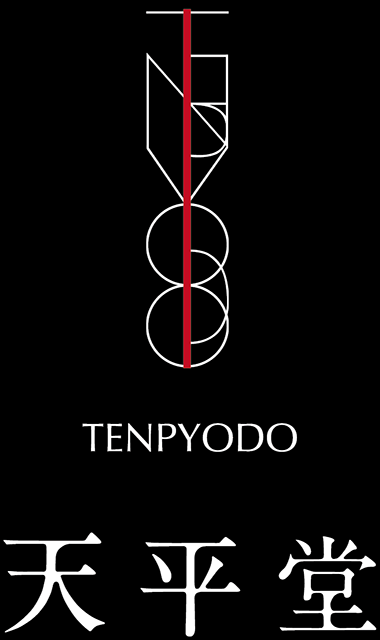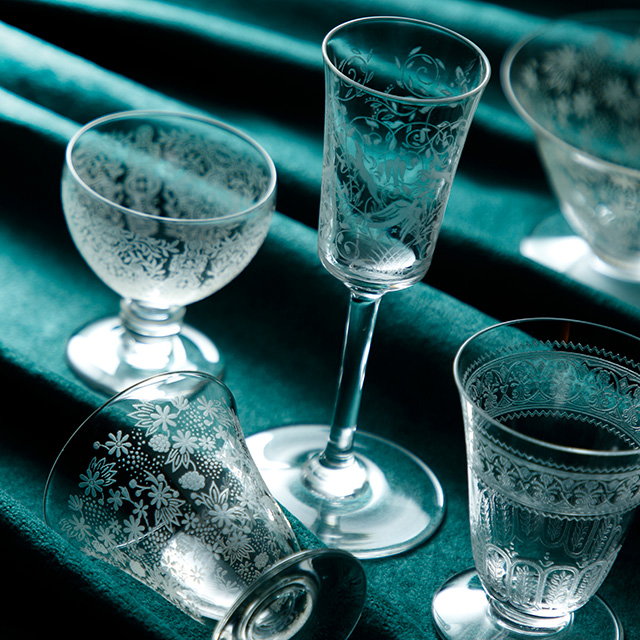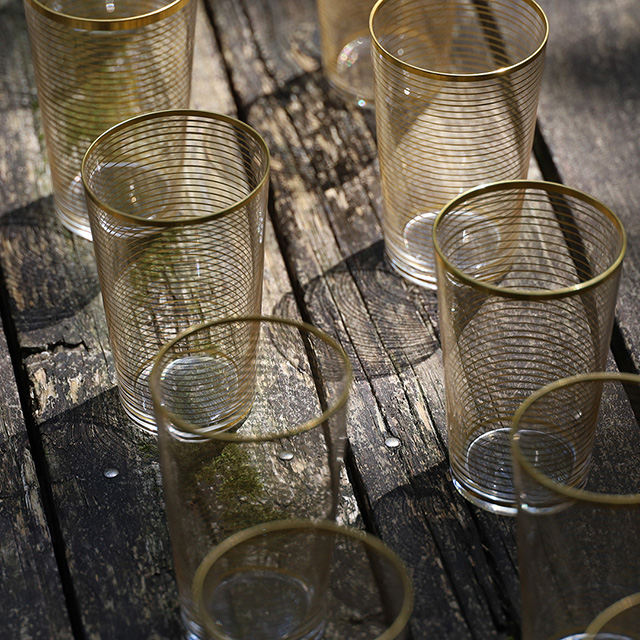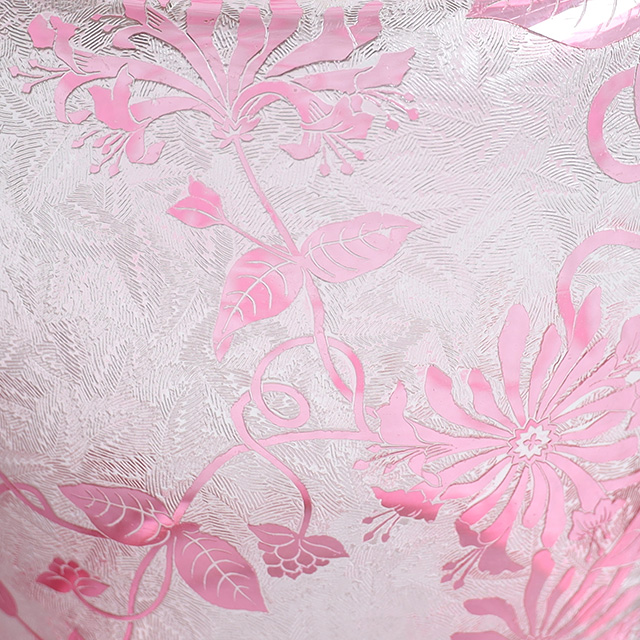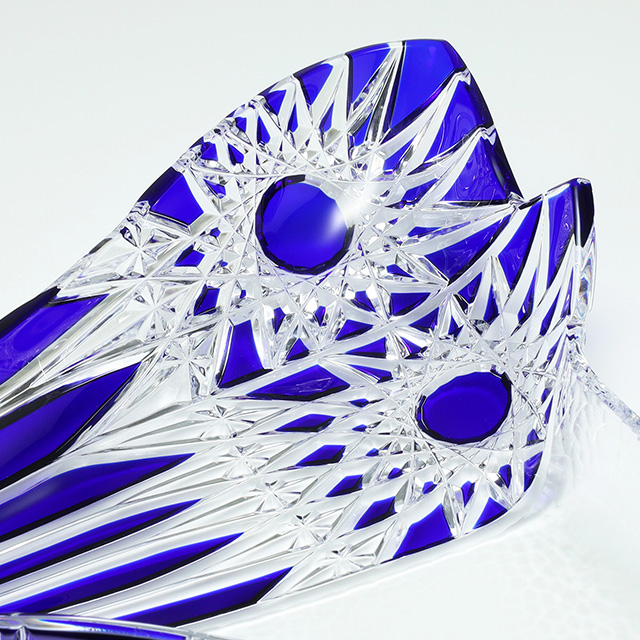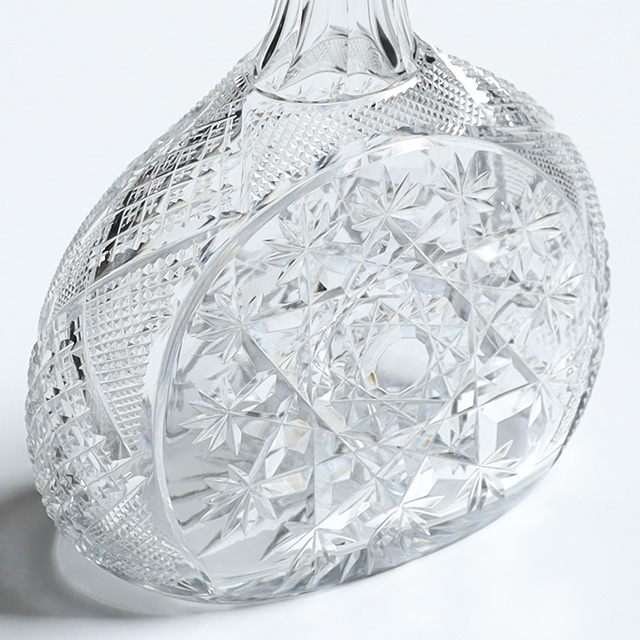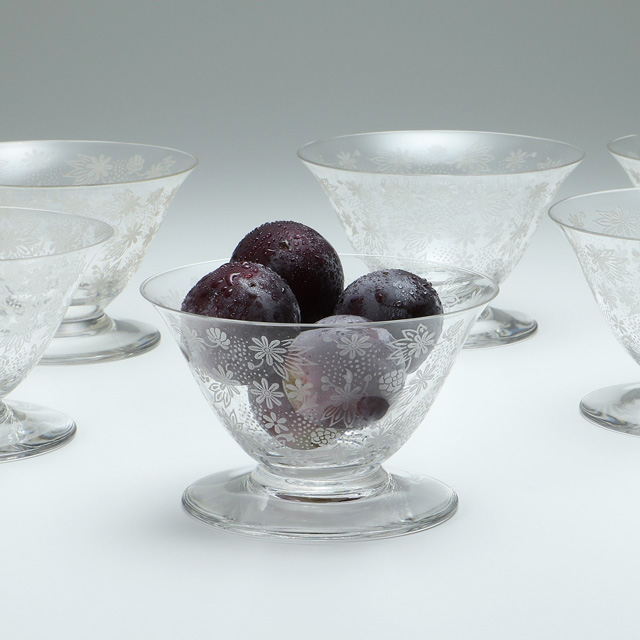Baccarat
バカラ
Baccarat
Baccarat is a French luxury crystal brand cherished by royal families around the world. Its origins trace back to 1764, when King Louis XV of France granted permission to establish a glassworks in the village of Baccarat, in the Lorraine region. In 1816, the first crystal glass was produced, and for over two centuries, master artisans have continued to weave light and shadow into works of art. To master the full process – blowing, cutting, and polishing – requires approximately 15 years of dedicated training. Baccarat has proudly produced more than 50 recipients of the prestigious M.O.F. (Meilleur Ouvrier de France), France’s highest honor for craftsmanship. Baccarat crystal is known as “full lead crystal”, meeting a rigorous standard of over 30% lead oxide content. As a result, only 60–70% of pieces meet the brand’s exacting criteria and are released as products; the remainder are discarded, reflecting an uncompromising pursuit of perfection. Its dazzling clarity and brilliance continue to captivate celebrities and connoisseurs worldwide. Baccarat adds a touch of radiance to celebratory occasions and possesses the power to elevate everyday moments into the extraordinary.
Harumi Baccarat
The relationship between Baccarat and Harumi Shoten traces its origins to 1901, when Genzaburo Yasuda, a jeweler and watch merchant, returned from Europe with a cut glass dish from Baccarat. He presented it as a gift to third-generation Tojiro Harumi of Harumi Shoten, with whom he shared familial ties. Enchanted by the exceptional quality of the glass, Tojiro is said to have begun placing orders in 1903. At the time, Yasuda – who had been conducting business with Baccarat since 1900 – acted as an intermediary for these transactions. A design drawing dated September 13, 1906, for a lidded bowl with fine vertical lines bears Yasuda’s name rather than that of Harumi Shoten, indicating that direct orders from Harumi Shoten commenced only on November 10, 1920. This was not Harumi Shoten’s first foray into overseas procurement. The company had already placed orders for ceramics used in tea ceremonies from countries such as the Netherlands. Promotional leaflets from the time, which also served as catalogs, suggest that Harumi Shoten handled a variety of glassware beyond Baccarat. Even for a firm with exceptional financial strength, Harumi Shoten’s decision to engage in trade with a distant foreign manufacturer reflects a remarkable degree of courage and foresight. It is said that a single Baccarat crystal bowl was so valuable it could equate to the cost of an entire house. This pioneering commission of glassware in Japan’s decorative arts history may be seen as a modern incarnation of “Ko-Sometsuke”. Initially, Harumi Shoten imported ready-made items. However, as Baccarat’s designs were tailored to spacious Western interiors, they did not suit the intimate proportions of Japanese tea rooms and tatami spaces. In response, Harumi Shoten began designing its own tea and kaiseki utensils, commissioning bespoke works from Baccarat. At the time, the idea of using glassware in tea ceremonies was considered unconventional. Yet, guided by a shared belief in creative innovation, Harumi Shoten and Baccarat’s artisans succeeded in crafting transparent tea utensils. These works gradually came to be known and cherished as “Harumi-gonomi (Harumi’s preferred style)”. Examples include square bowls with hail-cut designs and gold rims inspired by chinese antique ceramics, lidded soup and rice bowls modeled after lacquerware, and sake flasks and cups mimicking pottery, each work, reflecting the sensibilities of tea practitioners. It is said that the renowned restaurant “Kiccho” was the first in Japan to incorporate Baccarat into summer kaiseki cuisine during the early Showa period. The refined craftsmanship of Baccarat’s artisans, who translated Harumi Shoten’s aesthetic into high-quality lead crystal, and the sophisticated, highly accomplished designs continue to enchant admirers to this day. Across the periods of Showa, Heisei, and Reiwa, Baccarat has revived Harumi-gonomi (Harumi’s preferred style) works, honoring a legacy of elegance and cultural fusion.
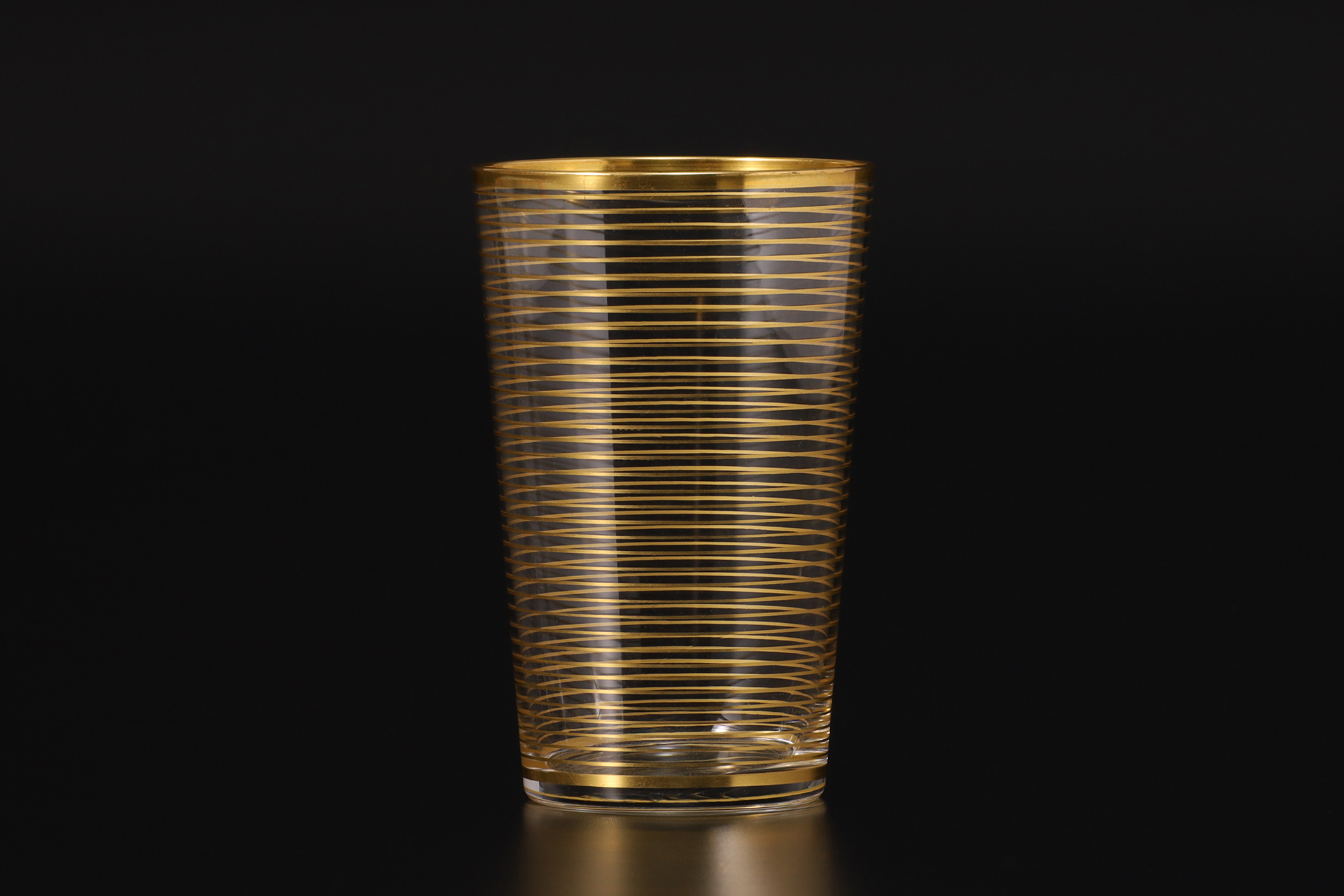
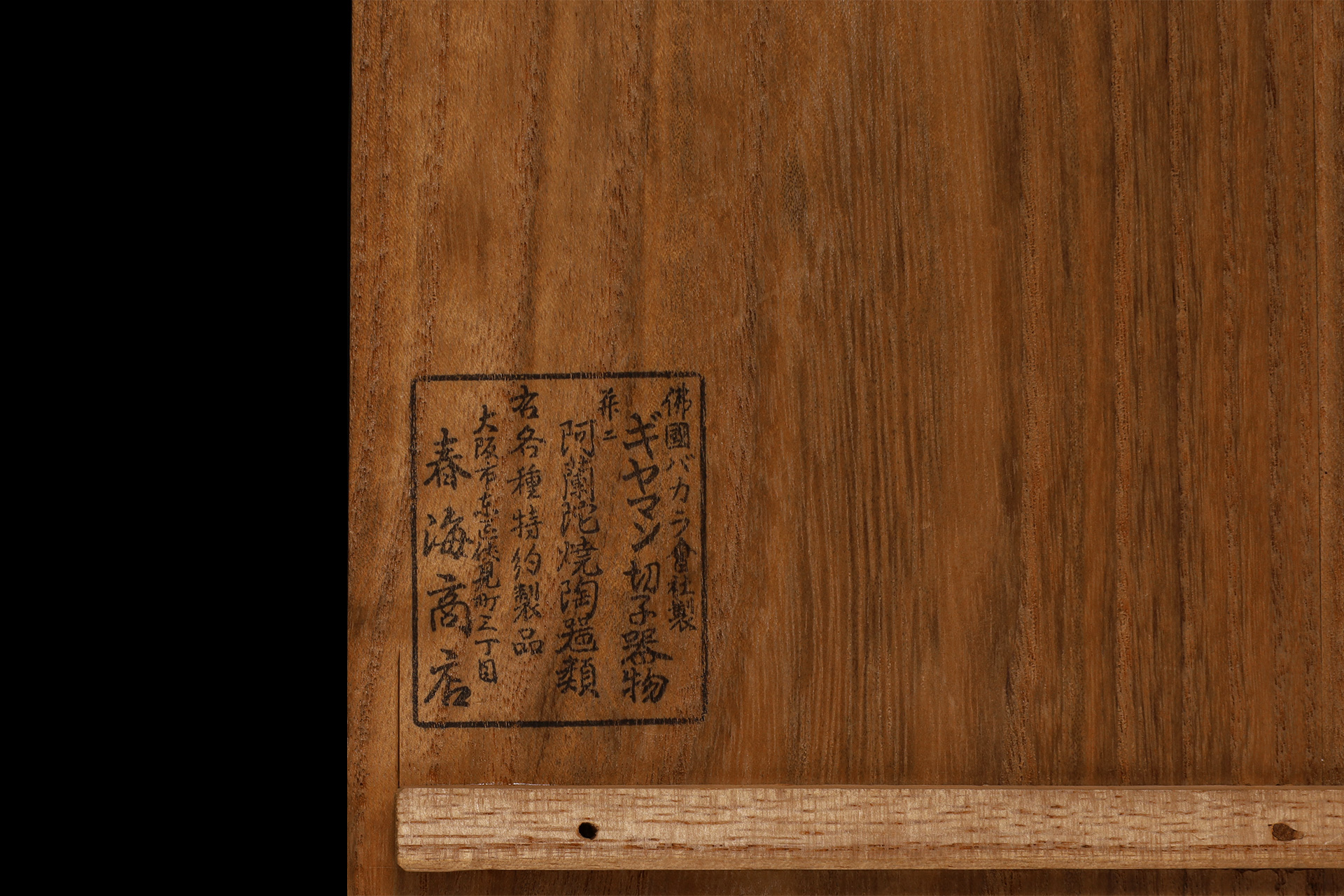
We sell and purchase Baccarat
We have a physical shop in Hakata-ku, Fukuoka City, where we sell and purchase "Baccarat" works. Drawing on a long career and rich experience in dealing, we promise to provide the finest service in the best interests of our customers. With the main goal of pleasing our customers, we will serve you with the utmost sincerity and responsibility until we close the deal.
